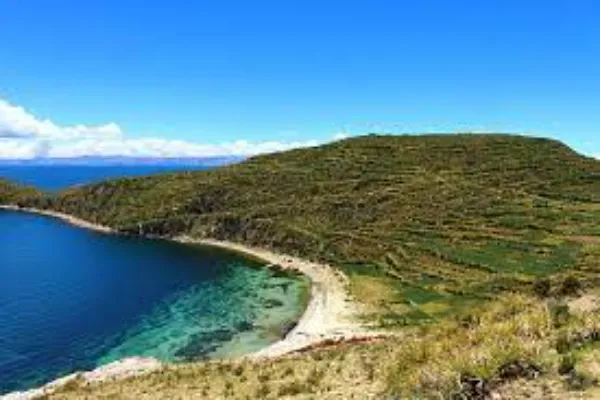
Discover the Mysterious Ancient Ruins of Tiwanaku, Bolivia
The ruins of Tiwanaku, located in the highlands of Bolivia, are the remains of an ancient and mysterious civilization. Dating back to at least the 6th century, Tiwanaku was a thriving and powerful city-state that had a profound impact on the region and people, with its influence stretching across parts of Peru, Chile, and Argentina.
Today, Tiwanaku stands as a testament to the advanced culture and engineering skills of its people. The archaeological site, which covers an area of around 4 square kilometers, is composed of stone and earthen architecture, including two large plazas and several monumental statues.
The most spectacular structure at Tiwanaku is the Kalasasaya, a rectangular platform enclosed by impressive stone walls. At the centre of the platform is the Akapana Pyramid, a pyramid-like structure that is believed to have been used for astronomical and spiritual purposes. Other notable features at the site include the sunken court, a large plaza surrounded by stepped walls, and the Pumapunku, a large terrace with finely carved stone blocks.
Tiwanaku is also home to a number of interesting artifacts, such as bone ornaments, pottery, and metal objects, which provide valuable insights into the culture of the people who lived there. The site has been the subject of much research and archaeological exploration, and is now a popular tourist destination.
Tiwanaku remains shrouded in mystery. While some of its secrets have been revealed, much still remains unknown. Its fascinating history and the impressive structures and artifacts provide an intriguing glimpse into the lives of its people and the world they lived in.
Uncover the Amazing Treasures of Bolivia’s Salt Flats
Bolivia’s Salar de Uyuni, the world’s largest salt flat, is a breathtakingly beautiful and unique destination. Located in the southwest of the country, the salt flats provide an unparalleled experience of the natural world. From the blinding white expanse of the salt flats to the incredible wildlife that call it home, the Salar de Uyuni is a must-see destination for any traveler.
The salt flats span an impressive 10,582 square kilometers and are part of the Altiplano, the great high plateau of the Andes. The Salar de Uyuni is made up of two vast salt lakes, Coipasa and Uyuni, which are covered with a thick layer of salt. The salt crust is as hard as concrete and can withstand the heaviest of vehicles.
The breathtaking landscape is a wonder to behold. It’s easy to get lost in the vastness of the salt flats, which can seem almost endless. The magnificent view of the salt flats extends to the horizon, and the surrounding mountains add to the stunning beauty of the landscape.
The Salar de Uyuni is home to a wide variety of wildlife, including flamingos, vicunas, and other species of birds. It is also a great place for bird watching, with over 300 species of birds making their home in the area.
The salt flats are also a great place to explore the unique geology of Bolivia. The Salar de Uyuni is home to several active volcanoes, which can be seen from the flats. The salt flats are also a great place to view the night sky, as the air is extremely clear and the stars can be seen in all their glory.
The Salar de Uyuni is a truly unique and wonderful destination, offering a glimpse into an otherworldly landscape. From its stunning landscape to its incredible wildlife, there is something for everyone in this breathtaking part of Bolivia. Don’t miss out on this incredible opportunity to explore one of the world’s greatest natural wonders.
Explore the Rich Cultural Heritage of Bolivia
Bolivia is a South American nation with a rich cultural heritage. Spanning a wide range of indigenous, colonial, and contemporary influences, the country has a unique and diverse history. From its architecture to its music, the country has a wide array of cultural attractions to explore.
The architecture of Bolivia is a vivid reflection of its past and present. Many of the colonial buildings in the cities of Sucre and La Paz have been beautifully restored, providing visitors with a glimpse into the country’s past. Meanwhile, in the rural areas and villages, traditional earthen homes with thatched roofs are still prominent.
Bolivia’s unique musical heritage is also worth exploring. From traditional Andean music to the lively rhythms of carnival, the country offers a wide range of musical styles. Traditional instruments such as the charango, pan flute, and harp are frequently employed, creating a unique sound.

The country’s traditional food is also an important part of its cultural heritage. Dishes such as salteñas (savory pastries), llajwa (a spicy salsa), and humintas (corn tamales) are all examples of traditional Bolivian cuisine. Visitors can find these dishes served at traditional markets or in restaurants.
Finally, Bolivia’s vibrant festivals are a great way to explore its culture. The country celebrates a variety of traditional religious and cultural festivals throughout the year. From the Diablada carnival in Oruro to the Fiesta de la Virgen de Urkupiña in Cochabamba, visitors can experience a wide range of festivities.
The cultural heritage of Bolivia is an important part of its identity. From its architecture to its traditional dishes, the country has a wealth of attractions to explore. Whether you’re interested in its music, festivals, or cuisine, Bolivia has something for everyone.
Uncover the Wonders of Bolivia’s Rich Wildlife
Bolivia is a country with a vast array of stunning wildlife, boasting an impressive selection of animals, birds, and plant life. From the exotic macaws of the Amazon to the majestic Andean condors, Bolivia’s wildlife is as diverse and vibrant as its culture.
Bolivia is home to a wide variety of animals, including the jaguar, spectacled bear, and giant anteater. The jaguar is a large, powerful cat that inhabits the Amazon rainforest and is the largest cat in the Americas. The spectacled bear is the only bear species found in South America, and can be found in the Andes. The giant anteater, meanwhile, is an insectivore found in the forests of the eastern and northern parts of Bolivia.
Bolivia is also home to a plethora of bird species. The most iconic bird is the Andean condor, a large vulture species that can be seen soaring over the Andes mountains. Other bird species include the macaw, a large parrot found in the Amazon rainforest; the hummingbird, which can be found throughout the country; and the flamingo, which can be seen in the salt flats of Uyuni.
Bolivia’s plant life is equally impressive, with its varied ecosystems ranging from Amazon rainforest to Andean mountains. Trees such as the ceiba, a tall, evergreen tree found in tropical regions, is a common sight in Bolivia’s forests. Other trees include the algarrobo, a deciduous tree found in the Andes, and the guayusa, a tea tree found in the Amazon. Bolivia is also home to many species of cacti, including the endangered San Pedro cactus, which can be found in the dry forest of the Chaco region.
Bolivia’s extensive wildlife is truly remarkable, offering visitors the opportunity to experience a plethora of animals, birds, and plants. From the majestic Andean condor to the ceiba tree, Bolivia’s rich wildlife is sure to captivate any nature enthusiast. With its varied ecosystems and stunning landscapes, Bolivia is a must-visit destination for anyone looking to explore the wonders of nature.
Enjoy the Majestic Beauty of Bolivia’s Natural Wonders
Bolivia is an enchanting South American country filled with breathtaking natural wonders. From snow-capped mountains to sprawling deserts, the country boasts stunning scenery and diverse landscapes. Bolivia’s majestic beauty is a must-see for any traveler.
One of the most iconic landmarks in Bolivia is the Salar de Uyuni, the world’s largest salt flat. This magnificent expanse of white stretches across more than 10,000 square kilometers and is a sight to behold. At certain times of the year, it transforms into a glorious mirror reflecting the snow-capped peaks of the Andes, creating an unforgettable sight.
Another natural wonder of Bolivia is Lake Titicaca, the highest navigable lake in the world. This awe-inspiring lake is home to the Uros people, who have built their homes atop floating islands made from reeds. The lake is also known for its crystal clear waters, which make it an ideal spot for swimming and diving.
Bolivia is also home to the mesmerizing Valle de La Luna, or Valley of the Moon. This surreal landscape is made up of peculiar rock formations, creating an otherworldly atmosphere. The area is also full of cacti and other exotic plants, making it a great spot for nature lovers.
Finally, Bolivia is home to majestic volcanoes, including the snow-capped Sajama and the active Lascar. These volcanoes are a sight to behold, and provide excellent opportunities for trekking and climbing.
Bolivia’s natural wonders are truly remarkable, and provide travelers with a unique experience. From its spectacular salt flats to its snow-capped volcanoes, Bolivia is a must-see destination for anyone looking to explore the beauty of nature.






Leave a Reply